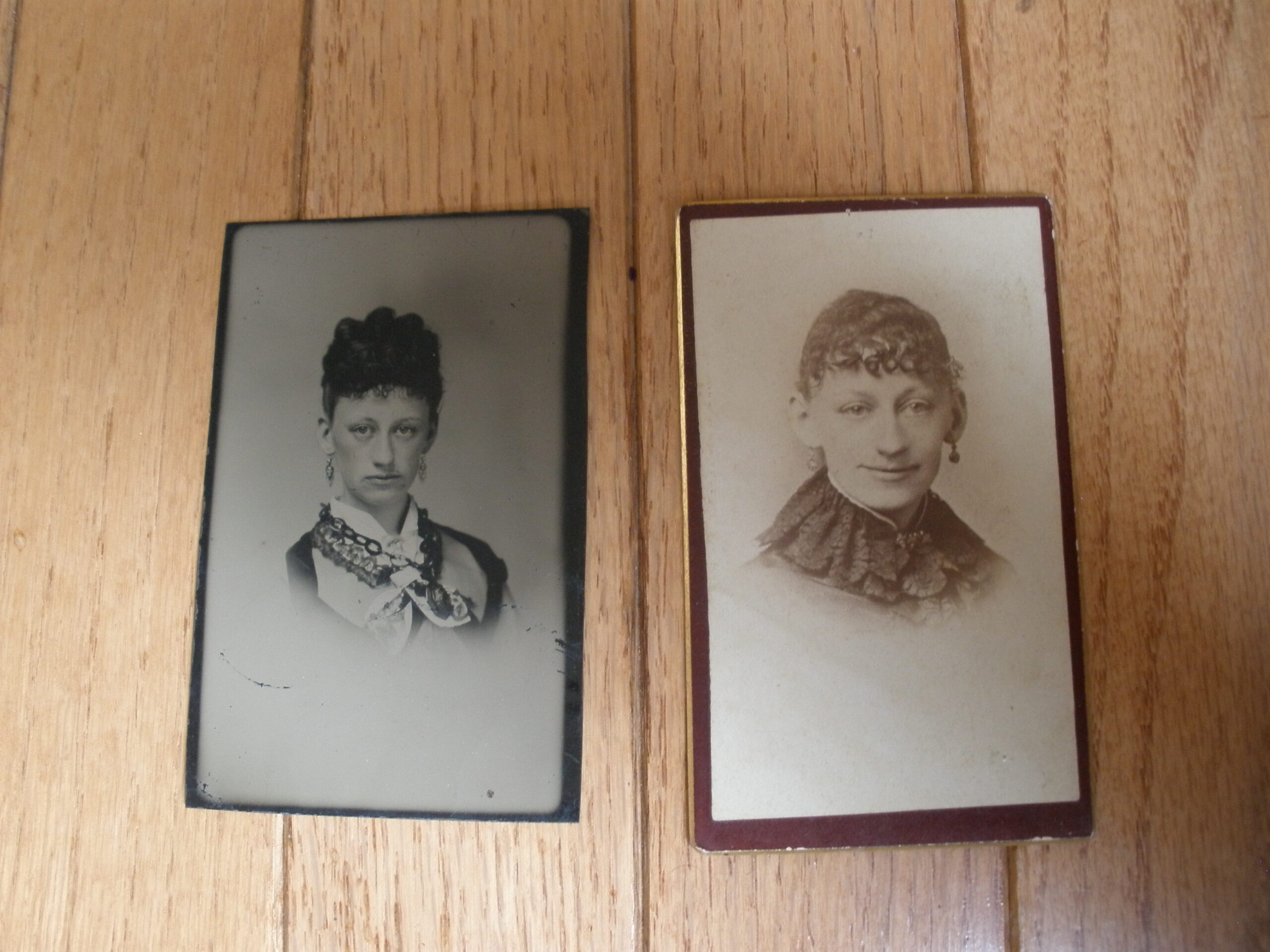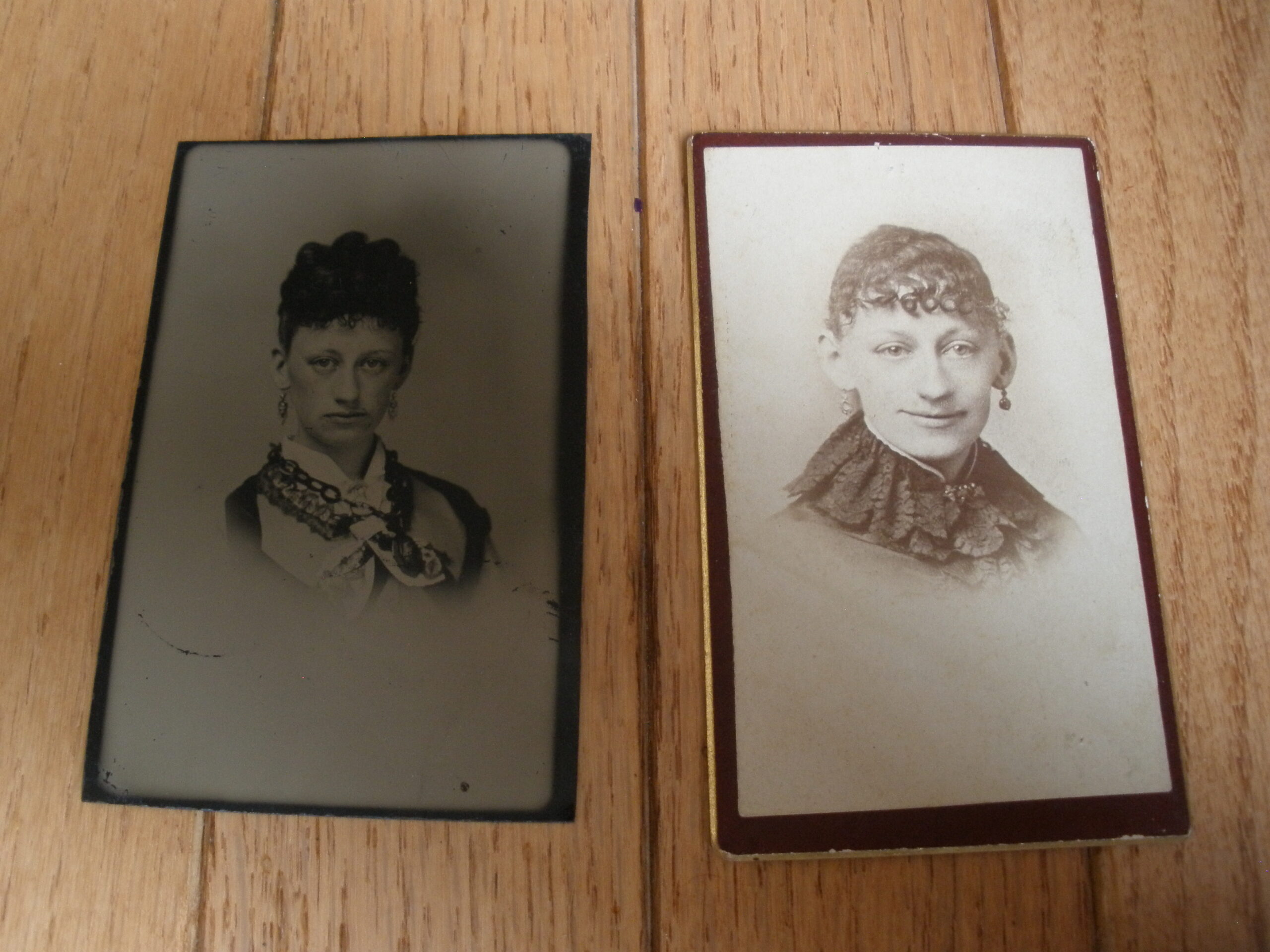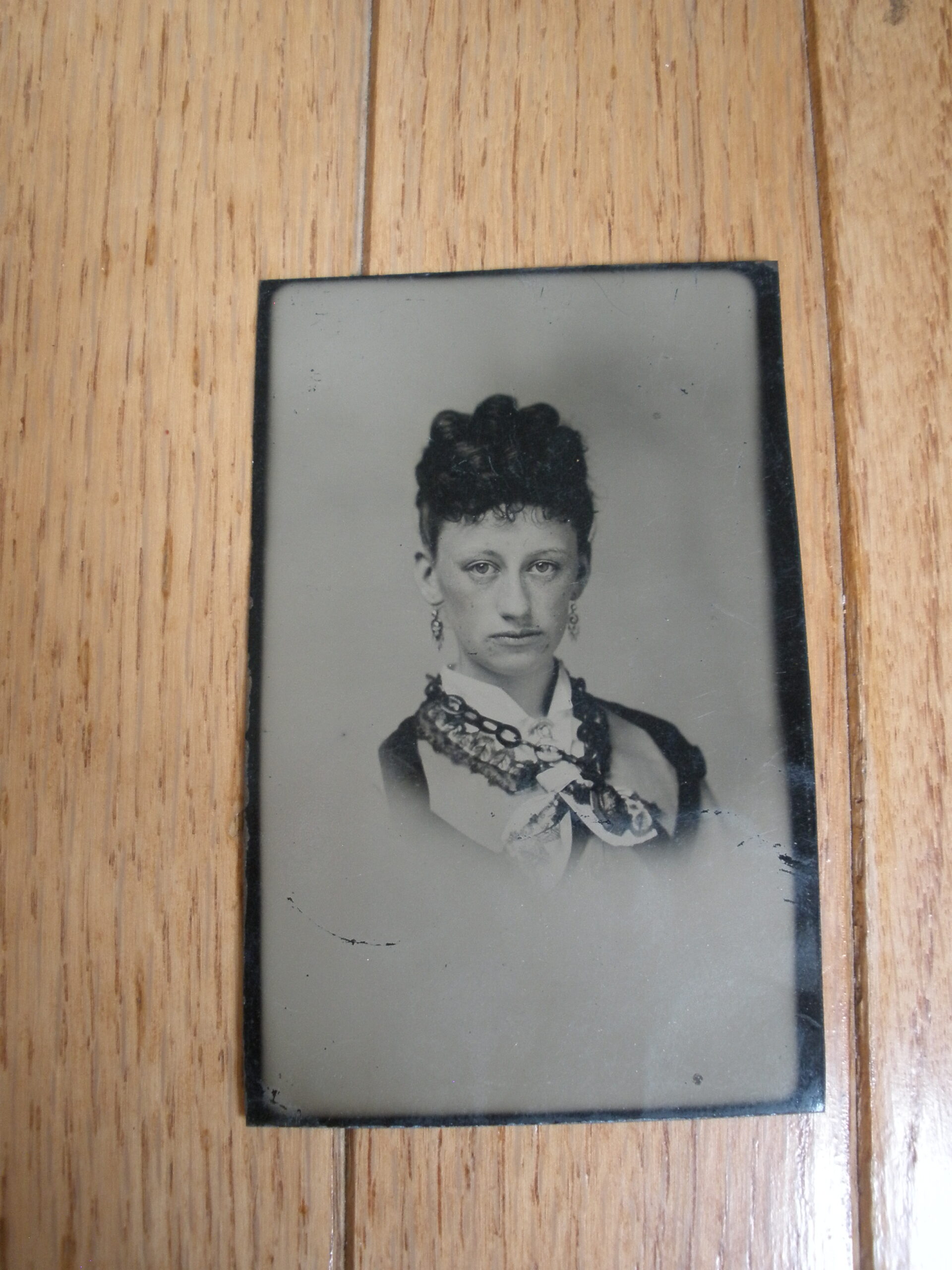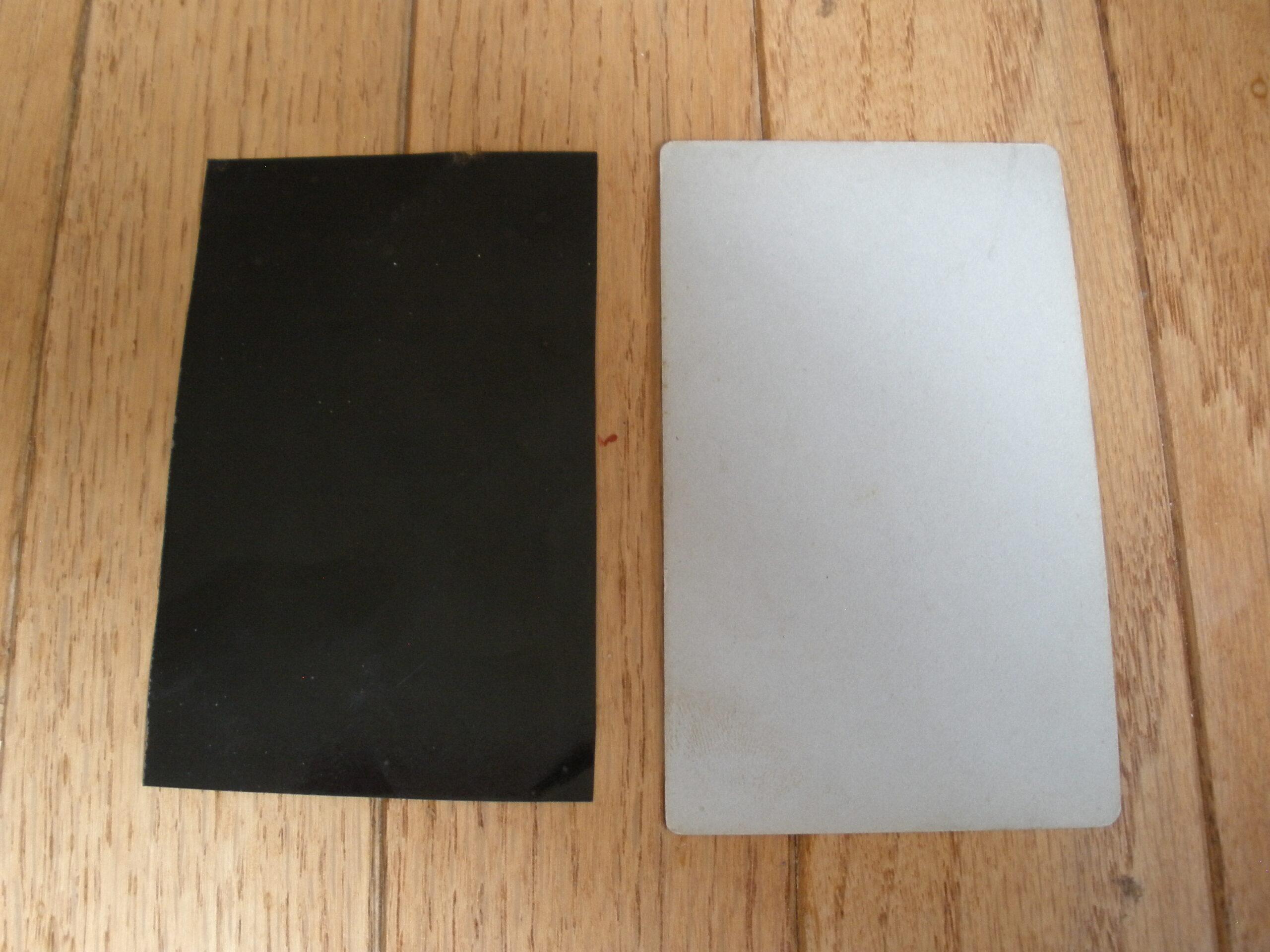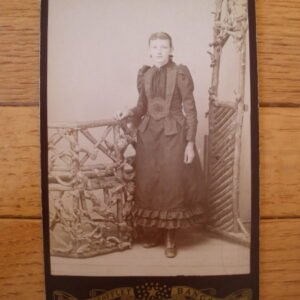For sale is an original 1800s TIN TYPE & CABINET CARD STUDIO PORTRAIT of THE SAME WOMAN. The earlier photo is the tin type which depicts the woman at a younger age with her hair in a bun wearing earrings. The same woman in the cabinet card appears 5 to 10 years older. The tin type measures 4 inches by 2 3/8 inches. The cabinet card is slightly larger. Take both to compare and contrast the progression of studio photography. The tin type probably dates to the late 1870s with the cabinet care taken in the later part of the 1880s. A great photography collectible.
A tintype is a photograph made by creating a direct positive on a thin sheet of metal coated with a dark lacquer or enamel and used as the support for the photographic emulsion. Tintypes enjoyed their widest use during the 1860s and 1870s, but lesser use of the medium persisted into the early 20th century. Tintype portraits were at first usually made in a formal photographic studio, like daguerreotypes and other early types of photographs. Later, tin types were most commonly made by photographers working in booths at fairs and carnivals, as well as by itinerant sidewalk photographers because a tintype could be developed and fixed and handed to the customer only a few minutes after the picture had been taken.
The tin type saw the Civil War come and go, documenting the individual soldier and horrific battle scenes. It captured scenes from the Wild West, as it was easy to produce by itinerant photographers working out of covered wagons. It began losing artistic and commercial ground to higher quality albumen prints on paper in the mid-1860s.
Cabinet cards were made from the 1860s to the early 1900s. The cabinet card was an albumen print on thin paper that was mounted on thicker paper. The cabinet card reached its peak popularity in the 1880’s but continued to be used in the early 1900’s. Starting in the 1880s, cabinet cards use beveled edges which may have a gold or silver color. A cabinet card with a scalloped border indicates a cabinet card made between 1886 and 1900. The borders on a cabinet can also help date the photo. Early cabinet cards had no borders. A single line border dates to 1885 – 1900. Embossed patterns for a border were used from 1894 to 1900. Lastly, an artistic underscore is from 1886 to 1896. The color of the cardboard mount is a important. The darker colored cardboard mounts, such as brown, burgundy, green, or black were use during the 1880’s and 1890’s. The imprinted photographer’s marks or any artwork on the back of the cabinet card also help in dating the cabinet card. In general, the fancier or more elaborate the design the later the date of the photo.

